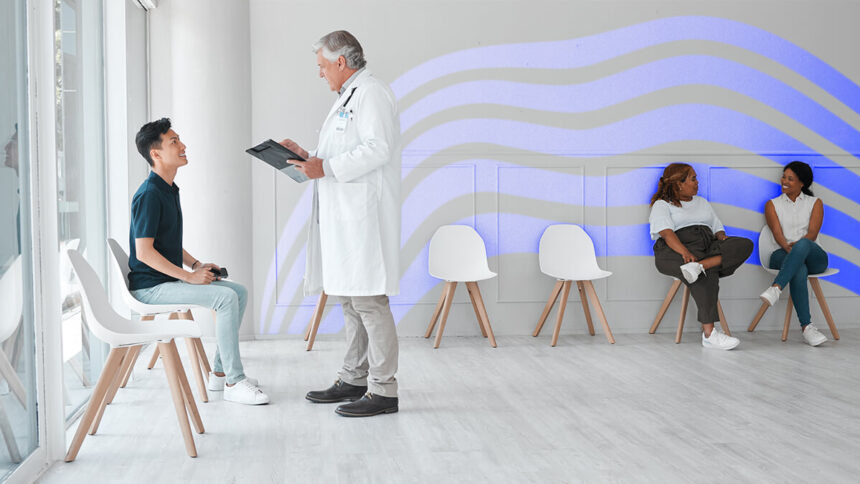Communication methods are evolving rapidly, and medical offices are no exception. Adopting patient texting systems offers a myriad of benefits, enhancing both operational efficiency and patient satisfaction. This article explores why integrating texting systems is not just an option but a necessity for modern medical practices.
Immediate and Convenient Communication
Patient texting systems provide a direct and immediate way to communicate with patients, cutting through the delays associated with phone calls and emails. For instance, appointment reminders can be sent directly to a patient’s phone, reducing the chances of no-shows and last-minute cancellations. This real-time communication method is not only convenient for patients but also optimizes the scheduling process, allowing medical staff to manage their time more effectively.
Enhanced Patient Engagement
Engaging patients in their healthcare journey is crucial for successful outcomes. Texting systems facilitate this by sending personalized health tips, reminders for medication, and follow-up appointments directly to patients’ mobile devices. This constant, yet non-intrusive, engagement helps patients feel cared for and connected to their healthcare provider, boosting their overall satisfaction and adherence to treatment plans.
Improved Accessibility for Diverse Patient Groups
Text messaging has the unique advantage of being accessible across various demographics, including the elderly, who may not be comfortable with more complex technologies. It bridges the communication gap for those who might face challenges with traditional methods, such as individuals with hearing impairments or those who speak English as a second language. Texts can be crafted in multiple languages and are straightforward to access, ensuring that all patients receive the information they need in a format they can understand.
Streamlined Internal Workflow
The integration of texting systems can significantly streamline the workflow within medical offices. By automating routine communications, staff can dedicate more time to patient care rather than administrative tasks. For example, sending lab results or answering common patient inquiries via text can free up significant time for medical professionals. This not only improves the office’s efficiency but also enhances the quality of service provided to patients.
Data Security and Compliance
While the benefits are clear, it is crucial to implement texting systems that comply with privacy and security regulations such as HIPAA in the United States. Reputable providers design their systems with robust security measures to protect sensitive patient information. Medical offices need to ensure that the texting service they choose meets all legal requirements, safeguarding both patient data and the practice’s reputation.
Reducing Administrative Burden
The adoption of patient texting systems significantly reduces the administrative burden on medical office staff. By automating communications that would typically require manual input, such as appointment confirmations and reminders, staff can focus more on patient care and less on routine tasks. This efficiency not only reduces the likelihood of human error but also lowers operational costs. As a result, offices can allocate more resources to improving patient services and expanding their capabilities.
Enhancing Follow-Up Care
Effective follow-up is essential in healthcare to ensure that patients adhere to their treatment plans and manage their conditions effectively. Texting systems make follow-ups more efficient by sending automated messages to check on patients’ progress after visits. This proactive approach can lead to better health outcomes by encouraging patients to stay engaged in their care process and alerting staff early if issues arise.
Boosting Patient Retention and Loyalty
In a competitive healthcare market, patient retention is crucial. Texting systems help build stronger relationships with patients by maintaining regular contact and providing a seamless communication experience. When patients receive timely updates, reminders, and health tips via text, they perceive their medical provider as attentive and dedicated to their well-being. This perception enhances patient loyalty, as they are more likely to return to a practice that makes communication easy and effective.
Facilitating Emergency Communication
In critical situations where quick communication can significantly impact patient outcomes, texting systems provide an invaluable tool. They allow medical offices to send urgent messages to patients about sudden changes such as office closures, emergency health warnings, or critical health advisories. This capability ensures that patients receive crucial information promptly, enhancing their safety and well-being, especially during public health emergencies.
Final Thoughts
Incorporating patient texting systems into medical office operations is a strategic move towards modernizing healthcare communications. These systems not only enhance patient engagement and satisfaction but also improve the overall efficiency and effectiveness of medical services. As technology continues to evolve, staying ahead with tools like patient texting will ensure that medical practices can provide the best possible care in an increasingly digital world.






